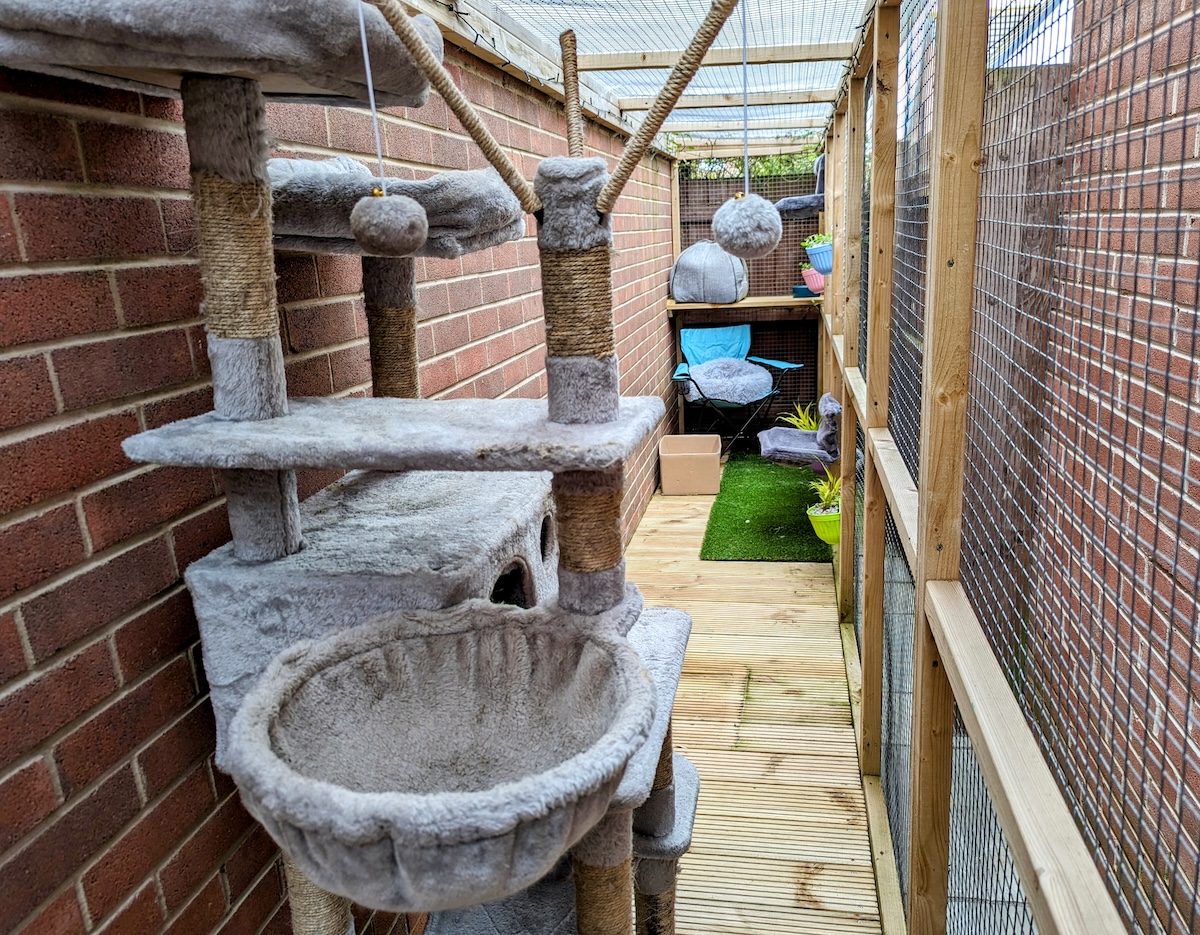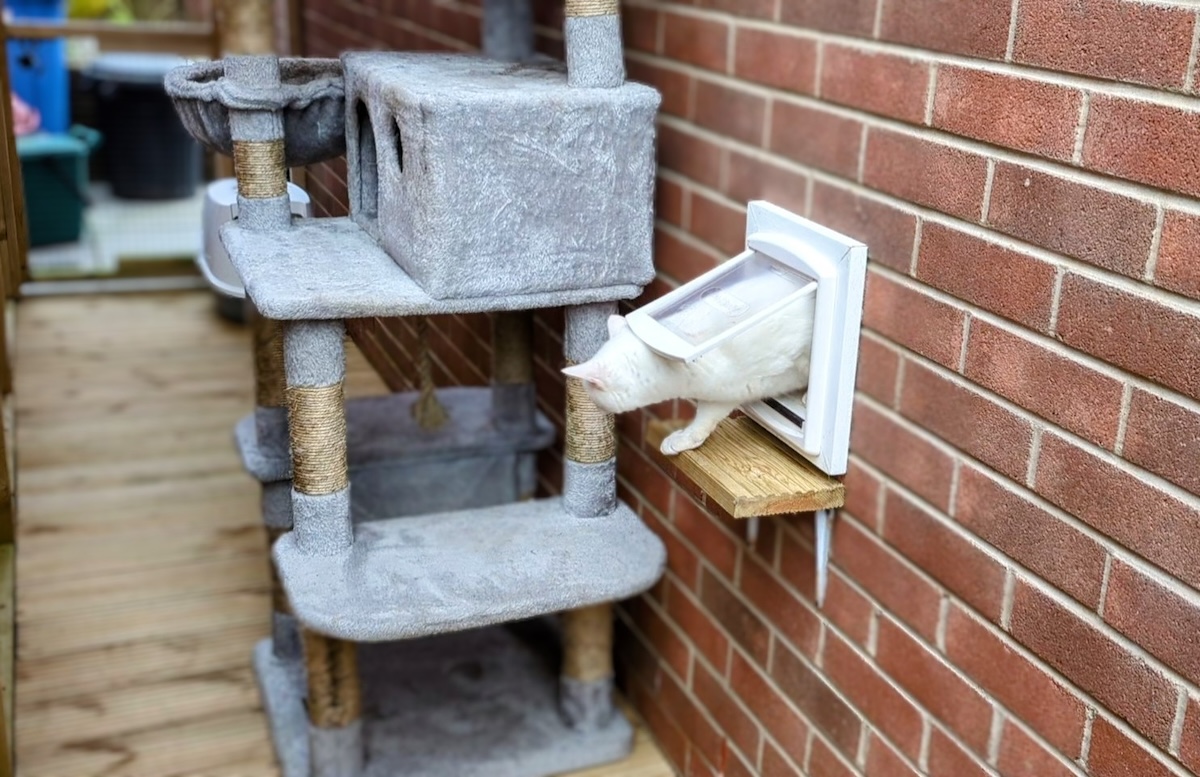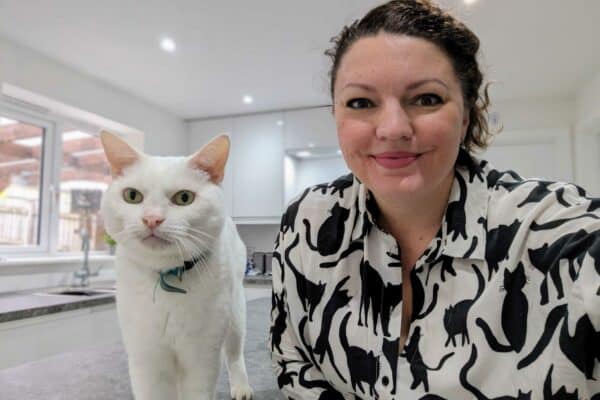Hi, I’m Dr. Karyn! Read my introduction to learn more about me and meet my five funny cats: Clutch, Cyril, Alex, Zelda, and Zazzles.
As you know, I am originally from Australia, but have lived in the UK for just over a decade. Growing up in Australia, I always had cats, and when I was young, those cats always lived outside. By the mid-1990s, it became increasingly apparent just how badly cats were affecting Australia’s wildlife. Cats were first introduced in the early 1800’s, into an ecosystem that previously did not contain a predator of their caliber. The feral cat population is estimated to fluctuate between one and four million, and kills approximately six million native animals every day, which threatens the survival of more than 100 animal species. And we’re not just talking about stray cats here; they are wild, compact killing machines.
By the time I was in my late teens, letting your cat roam outside, especially at night, was frowned upon, and there were cat curfew laws enforced in most states. Australia. So for me, keeping my cats safe indoors has become normal practice; I invested in an outdoor cat enclosure to allow my cats to safely enjoy the great outdoors, protecting them from the dangers of life in suburban Queensland, while maintaining the safety of wildlife. My two cats have grown up knowing that a harness and lead is just a normal part of exploring, and it’s easy to find a wide range of equipment and accessories to accommodate their restricted outdoor excursions.

When I moved to the UK, I was therefore quite surprised when many cat owners informed me that keeping cats indoors was considered “cruel”. In England, cats have been part of the ecosystem for at least a millennia, if not longer, so the issues faced in Australia do not apply. However, the number of injuries from dog attacks, cat fights, and road traffic accidents that I have seen in practice, in addition to the number of cats that did not survive car crashes, was enough to convince me that an outdoor lifestyle in non built up areas is the safest option for my feline family members. When it comes to taking care of cats, a big part of that responsibility is keeping them safe. Could be a cat like ran into the field they could see from the window, but they probably didn’t know the busy road, big dogs, and lots of cats were between them.
In veterinary practice, I see many cats suffering from stress-induced Feline Lower Urinary Tract Disease (FLUTD), and I believe that cat population density is largely to blame. In crowded suburbs, you often have dozens of households with cats, all occupying a relatively small area, meaning there’s a lot of competition for territory. This always leads to fighting and stress.
So despite being unpopular in this country, I choose to keep my five cats safe indoors, but that doesn’t mean they can’t go outside…
Most cat lovers will know the importance of environmental enrichment; providing scratching posts, cat trees etc to allow cats to jump, climb, and observe from a height, and I have plenty of those in my home. Harder to find, however, are cat cages. While many people share my views on keeping cats safe indoors, we are a minority enough that there are very few items available for purchase in the UK. And so, my husband and I stopped looking to buy a cat enclosure, and just built one.
Using panels from a chicken pen, we created an enclosure that runs along the side of our house, utilizing an area that would otherwise be a waste of space. There is a large secure door at one end, but the cats’ access is through a cat door strategically hidden behind one of the lounge chairs. The comings and goings of this cat portal were of great interest to our two chihuahuas at first, but they seemed to accept the sound of the cat flap as part of the normal soundscape of the home.

Our catio has a translucent roof that keeps the rain out but lets the sunlight in. There is a scratching post, access to cat grass, and several bedding options. I hung some small planters that contained some Nepeta sp. (aka Catnip plant) and some Japanese Forest Grass (Hakonechloa sp.). It is a cat-safe herb with soft green leaves that most cats enjoy eating. There are many different grasses you can offer your cats, but make sure you know which species you are using, and don’t let them overindulge, as too much grass can cause stomach upset.
I strategically placed the hanging pots in high places and locations that the cats could reach but couldn’t easily sit on – I didn’t want to turn them into toilets! Adding some rocks on top of the soil helps with this too, and makes them look great!

At first, Clutch was the only one brave enough to explore the outer sanctuary, but over time, Zelda and Cyril became regular visitors (although I was a little worried for a while that Cyril would have a hard time adjusting to the tunnel), and Alex and Zazzles become more interested in the magic portal behind the sofa. What surprises me the most is how often Clutch and Zelda spend a lot of time in the catio every winter, seemingly unfazed by the cold temperatures!
Even if you can’t find the perfect cat enclosure, there are many different ways to make the space you have, and the equipment you can find, work for you and your home. Whether you share your home with one cat or five, keeping them safe should be your top priority. But it’s nice to know that if you keep your cat indoors, they can still enjoy a taste of the outside world.




